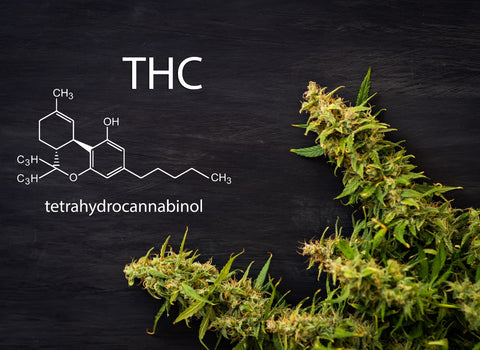
Breast cancer may have just found its greatest adversary: small amounts of THC and CBD pack some serious anticancer properties.
Research has revealed that “cannabinoids are able to regulate essential cellular processes involved in tumorigenesis, such as progression through the cell cycle, cell proliferation and cell death.”
Low-dose cannabis may offer a complementary therapy for glioblastoma multiforme (GBM), the most aggressive and deadly form of brain cancer. Though research is still in the early stages, initial studies suggest microdoses of cannabis compounds may help slow tumor growth and extend patient survival.
There are so many reasons why you should microdose cannabis and ditch harmful smoking and vaping. Try our low-dose THC edibles and choose from a variety of flavors and potency levels that will suit your needs, whether you are looking for mild relaxation, help with sleep, or relief from chronic pain and inflammation.
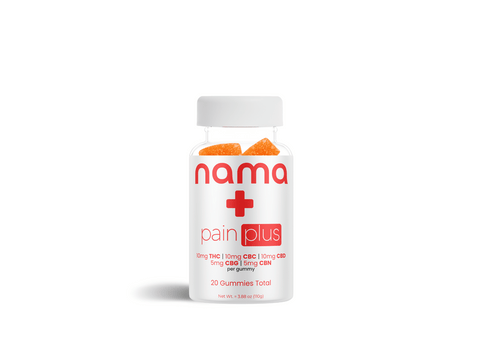

THC: 10 mg | CBC: 10 mg | CBD: 10 mg | CBG: 5 mg | CBN 5mg
What is brain cancer?
Brain cancer is an abnormal growth that originates in brain matter or surrounding cranial nerves. Also known as intracranial or primary brain tumors, these abnormal cells may be benign (non-cancerous) or malignant (cancerous), with malignant tumors posing a significantly more serious health threat.
Brain cancer begins when genetic mutations occur in neurons, normal glial cells (cells that surround the neurons), or other cells in the brain and central nervous system. These mutations cause them to grow uncontrollably and lose the ability to regulate their division and proliferation. The accumulating abnormal cells clump together to form a mass known as a tumor or neoplasm.
Within the brain, tumors can develop in many different regions, including:
- Cerebrum: the two large brain hemispheres composed of an outer layer of gray matter and inner white matter. Tumors can form in the parietal, frontal, temporal, and occipital lobes of the cerebrum.
- Cerebellum: the portion at the back bottom of the brain responsible for coordination and balance.
- Brain stem: the stalk-like structure connecting the brain to the spinal cord. Critical for breathing, heart function, and motor control.
- Meninges: the membranous layers enveloping the brain and spinal cord. Tumors of the meninges are called meningiomas.
- Cranial nerves: the 12 nerves originating in the brain responsible for eye movement, vision, hearing, facial movement, swallowing, tongue function, shoulder and neck movement, and more.
- Pituitary gland: the pea-sized gland at the brain's base secretes hormones regulating growth, metabolism, reproduction.
- Pineal gland: produces melatonin, regulating sleep.
- Lymphatic tissue: part of the immune system scattered throughout the brain. Lymphoma and other types of cancer can arise in these tissues.
As brain tumor cells rapidly divide, the mass expands, invading and damaging surrounding brain tissue. This affects vital functions controlled by that area of the brain.
Brain cancer can develop in the brain itself (primary brain cancer) or spread from other parts of the body to the brain (metastatic brain cancer).
What are the symptoms of brain cancer?
Rather than presenting as a single defined set of symptoms, brain tumors tend to cause vague, nonspecific neurological changes that slowly progress over time. The symptoms may differ depending on the tumor's location, size, and whether it's benign or malignant.
Common symptoms include:
- Headaches
- Seizures
- Nausea and vomiting
- Changes in vision
- Weakness or numbness
- Personality or behavioral changes
- Speech problems
- Memory issues
The earlier a brain tumor is detected, the better the outcome. Yet subtle symptoms are easily dismissed or attributed to other causes. Even doctors may miss crucial early signals or delay neuroimaging unless seizures, motor deficits, or other major red flags appear.
That’s why doctors urge anyone who notices the gradual development of symptoms to get a medical examination instead of waiting for a dramatic event. This empowers both patients and doctors to pursue potentially lifesaving early detection.
How does brain cancer develop?
Like other forms of cancer, brain cancer develops through a complex process involving genetic mutations and the uncontrolled growth of cells. Here are the stages of brain cancer development:
- Genetic mutations: the initial step in the development of brain cancer. These mutations can be caused by exposure to radiation, chemicals, or other environmental toxins. In many cases, the exact cause of these mutations remains unknown.
- Loss of normal growth control: healthy cells in the body have a tightly regulated system that controls their growth and division. Mutations in the genes that regulate this process can disrupt the normal control mechanisms. In brain cancer, mutations often occur in genes that are responsible for regulating cell growth, cell cycle progression, and DNA repair.
- Formation of a precancerous lesion: a group of cells in the brain may begin to divide and grow uncontrollably as a result of genetic mutations. This stage is not yet considered cancer but is often referred to as a precancerous or preneoplastic lesion. These abnormal cells can form a mass or cluster within the brain.
- Development of a tumor: if the genetic mutations persist and accumulate, the abnormal cells can eventually progress into a tumor. This mass of cells continues to grow and divide in an uncontrolled manner.
- Invasion of nearby tissues: malignant brain tumors, particularly gliomas, have the ability to invade nearby healthy brain tissue. They do this by penetrating and infiltrating the surrounding structures, making it challenging to remove them completely during surgery. This invasive behavior is one of the reasons why brain cancer can be difficult to treat.
- Angiogenesis: in order to sustain their growth, brain cancer cells stimulate the formation of new blood vessels through a process called angiogenesis. This ensures a continuous supply of oxygen and nutrients to the tumor.
- Metastasis: some cancers may spread to the brain from other parts of the body through metastasis. Their cells travel via the bloodstream or lymphatic system from the primary cancer site to the brain.
- Malignancy and grading: brain tumors are categorized based on their malignancy and grade. High-grade tumors are more aggressive and grow faster, while low-grade tumors are less aggressive. The grade is determined by examining tumor tissue under a microscope.
How many types of brain cancer are there?
According to Johns Hopkins, there are over 120 different types of brain tumors. The type of brain cancer a person has can significantly impact their treatment options, prognosis, and overall outcome.
Here are some common and rare types of brain cancers:
- Gliomas are the most common type of primary brain tumors. They develop from glial cells, which provide support and insulation for neurons. Gliomas can be further categorized into subtypes based on the specific glial cell they originate from:
- Glioblastoma multiforme is the most aggressive and malignant form of glioma. GBMs are highly invasive and fast-growing tumors and are challenging to treat.
- Astrocytomas develop from astrocytes (a subtype of glial cells) and can be low-grade (less aggressive) or high-grade (more aggressive).
- Oligodendrogliomas originate from oligodendrocytes (the myelinating cells of the central nervous system). They are usually slow-growing but can become more aggressive over time.
- Ependymomas develop from ependymal cells lining the ventricles in the brain and the central canal of the spinal cord. These are more common in children.
- Meningiomas are tumors that arise from the meninges, the protective membranes surrounding the brain and spinal cord. They are typically benign but can cause symptoms depending on their location and size. Meningiomas are more common in women and often occur in older adults.
- Pituitary tumors develop in the pituitary gland, which regulates hormone production. Most pituitary tumors are noncancerous and can often be treated effectively.
- Pineal region tumors form in or near the pineal gland, which is involved in regulating sleep-wake cycles and producing certain hormones.
- Medulloblastomas are malignant brain tumors that primarily affect children. They develop in the cerebellum, an area at the back of the brain responsible for coordination and balance.
- Schwannomas, also known as vestibular schwannomas or acoustic neuromas, arise from Schwann cells that cover nerves. They commonly develop on the vestibular nerve, which is involved in hearing and balance, and are often non-cancerous.
- Primary central nervous system lymphoma (PCNSL) is a rare form of brain cancer that originates in lymphocytes (a type of white blood cell). It occurs within the central nervous system and is typically non-Hodgkin lymphoma.
What causes brain cancer?
The vast majority of brain tumors are not attributable to any specific cause but rather result from random gene mutations occurring for unknown reasons during cell replication. In most cases, brain cancer is likely the result of a combination of factors rather than a single cause.
- Some people with cancer show a genetic predisposition to developing brain cancer. While most brain tumors are not hereditary, having a family history of brain cancer or certain genetic conditions can increase an individual's risk.
- Exposure to high-dose ionizing radiation, such as that used in certain medical treatments (e.g., radiation therapy for head and neck cancers) or radiation accidents, can increase the risk of brain cancer.
- Exposure to certain chemicals and environmental toxins may be linked to an increased risk of brain cancer. These chemicals may include pesticides, solvents, and other industrial substances.
- The risk of brain cancer increases with age, with the highest incidence occurring in older adults. However, brain cancer can affect individuals of all ages, including children.
- Certain viral infections may have a potential role in brain cancer development.
- Immune system dysfunction or suppression may contribute to an increased risk of cancer, including brain cancer.
- Some studies have suggested a possible association between a history of traumatic brain injury (TBI) and an increased risk of brain cancer, particularly gliomas.
- Hormonal factors may play a role in the development of certain types of brain tumors.
Many cases of brain cancer occur in people without any known risk factors, so the precise cause and risk factors remain unknown.
What are the treatment options for brain cancer?
The treatment options for brain cancer depend on the type and grade of the tumor, its location, and the patient's overall health. It often involves a combination of approaches.
- Surgery
- Tumor resection involves the surgical removal of the tumor. This is often the first-line treatment for brain cancer, when feasible. The goal of surgical resection is to remove as much of the tumor as possible without causing damage to vital brain structures. In some cases, complete removal may not be possible due to the tumor's location or invasiveness.
- Debulking is performed when complete removal is not possible. This procedure reduces the tumor's size and relieves pressure on the brain.
- Radiation therapy
- Chemotherapy
- Targeted therapy
- Immunotherapy
- Corticosteroids
- Radiation therapy boost
- Rehabilitation
Without treatment, brain tumors may compress vital brain structures or grow to block cerebrospinal fluid flow, increasing pressure inside the skull. They can also disrupt neuron connections, blood flow, and oxygen delivery, eventually becoming fatal if not treated in time.
While these treatments are critical for fighting brain cancer, they can be grueling on both the mind and body of the patient. In searching for integrative approaches to complement conventional treatments, some patients have turned to carefully controlled, low doses of cannabis compounds like THC and CBD.
See what the big deal about these low doses is and read our in-depth guide to microdosing cannabis.
What are the anti-cancer effects of cannabis?
A 2022 systematic review and meta-analysis explained the anticancer properties of cannabis.
- In preclinical studies, THC and CBD have demonstrated potential for inhibiting tumor growth and metastasis. These compounds might exert synergistic anti-cancer effects with traditional treatment of chemotherapy, enhancing its properties.
- THC and CBD may work as anti-metastatic and pro-apoptotic agents in cancer therapy. They could also potentially support the immune system in its fight against tumors.
- The endocannabinoid system (ECS) could play an important role in tumor defense, making it a promising target for anticancer interventions.
Experimental studies showed that the activation of cannabinoid receptors by cannabinoids is antitumorigenic in most cases, i.e., it inhibits tumor cell proliferation, induces apoptosis in vitro, and blocks angiogenesis and tumor invasion/metastasis in vivo. (Dariš, et. al.)
Now might be a good time to read more about Delta-9-tetrahydrocannabinol (Delta 9 THC) and learn all about its effects and benefits.
Don’t forget to jog your memory about cannabidiol (CBD) and its amazing health benefits.
How does the endocannabinoid system fight cancer?
The endocannabinoid system (ECS) is a complex network of signals and receptors that are responsible for a wide range of bodily functions. It is made up of endocannabinoids, enzymes that break them down, and cannabinoid receptors.
While our bodies naturally produce endocannabinoids, phytocannabinoids found in plants like cannabis interact with our ECS in the same way. They bind to the endocannabinoid receptors and influence pain relief, sleep, appetite, the immune response, and many other biochemical changes in the body. By targeting the ECS, cannabinoids seem to slow tumor growth.
Delta 9 has a similar structure to the endocannabinoids and binds strongly to cannabinoid receptors, specifically CB1 and CB2 receptors. This binding triggers cellular responses that produce diverse effects in the body. When taken at sufficient doses, Delta 9’s interaction with CB1 receptors produces the “high” traditionally associated with THC.
Low amounts of THC do not have the psychotropic effects that normally occur with smoked cannabis or other forms of consumption.
Find out why gummies are the healthiest way to microdose cannabis.
Many of our CBD products contain low doses of THC. That’s why our Euphoria gummies are going to change your life. Ten milligrams of Delta 9 are paired with equal amounts of CBD to give you a mild euphoric experience while relieving cancer, chronic pain, and anxiety.
In fact, THC and CBD make such a good combo. Interested in learning more about the powerful effects of CBD and THC?
Cannabis induces cancer cell apoptosis
Inducing cancer cell apoptosis is a vital way of fighting cancer. Apoptosis is a process of programmed cell death. It involves a series of biochemical events that change the cell's morphology (shape and structure), leading cells to self-destruct.
Cancer cells often have mechanisms to avoid apoptosis, allowing them to grow and spread uncontrollably. A 2005 study found that a synthetic cannabinoid can reduce the amount of phosphorylated BAD protein, which is linked to cancer cell survival pathways.
The results showed that “the increase of proapoptotic Bad activity is an important link between the inhibition of survival pathways and the onset of the execution phase of cannabinoid-induced glioma cell death.” In other words, cannabis may thwart the ability of cancer cells to avoid apoptosis.
A different study found that CBD shows extraordinary cytotoxic activity in oral cancer cells. CBD seems to lower the resistance of cancer cells to treatment and even change their morphological characteristics to hinder their growth.
…CBD has a cytotoxic effect on cell viability and induces cell apoptosis. CBD also increases cytotoxicity on cell survival and the migration of oral cancer cells, so it may be a therapeutic drug for oral cancer.
The anti-proliferative effect of cannabis
Cancer cell proliferation is the rapid growth of cancer cells that leads to the formation of tumors. In studies, small amounts of cannabis, specifically the combination of THC and CBD, were shown to inhibit lung cancer cell proliferation.
In the U251 and SF126 glioblastoma cell lines, Delta(9)-THC and cannabidiol acted synergistically to inhibit cell proliferation. The treatment of glioblastoma cells with both compounds led to significant modulations of the cell cycle and induction of reactive oxygen species and apoptosis. (Marcu, et. al.)
A 2006 study found that Delta 9 THC has antiproliferative effects in human breast cancer cell lines by “blocking the progression of the cell cycle and by inducing apoptosis.” It seems that a great deal of cannabinoid receptor regulation is involved in these extraordinary anti-cancer effects of THC.
…the proliferation pattern of normal human mammary epithelial cells was much less affected by THC… There was also an association between CB(2) expression and other markers of prognostic and predictive value, such as estrogen receptor, progesterone receptor, and ERBB2/HER-2 oncogene.
The study suggests that Delta 9 THC may hold promise in the treatment of breast cancer by inhibiting cell proliferation and inducing apoptosis through CB2 cannabinoid receptor activation.
Anti-metastatic THC and CBD
Metastasis is the process by which cancer cells migrate from the main tumor to other parts of the body. Cannabis seems to reduce metastasis by impeding cancer cell invasion and migration. According to Preet, et. al., “THC was able to inhibit tumor growth and lung metastases in a murine model of lung cancer.”
“Other in vivo studies demonstrated that treatment with CBD reduced colon cancer cell proliferation, induced apoptosis, and also had anti-metastatic and anti-angiogenesis effects.” (Honarmand, et. al.)
We think these antitumor effects are pretty impressive. But what does the research say about the effects of cannabis on brain tumors?
Product QUIZ
Need help deciding what product is best for you? Take our quiz, just three questions until your perfect match!
Can THC and CBD help treat brain tumors?
Despite the scientific evidence behind these extraordinary anti-cancer properties of cannabis, research on the use of THC and CBD in the treatment of brain tumors is still limited.
Cannabis and its derivatives are being used increasingly by patients with cancer, including patients with glioblastoma multiforme (GBM), the most common and aggressive primary brain malignancy. Despite promising preclinical data suggesting potential anti-cancer effects for cannabinoids in GBM, clinical and safety data are lacking. (Doherty and de Paula)
Based on what we know so far, cannabinoids may fight brain cancer via the following mechanisms:
- Apoptosis. Cannabinoids can induce programmed cell death in human glioma cells and other types of cancer cells through sustained accumulation of the lipid ceramide and activation of cell death signaling cascades.
- Autophagy. THC triggers apoptosis by inducing ER stress, altering ceramide levels, and activating autophagy.
- Inhibiting cell growth and division. THC and other cannabinoids can inhibit tumor cell growth and proliferation by modulating signaling pathways like MAPK, PI3K, and COX-2 that control cell survival and death. Cannabinoids arrest the cell cycle in gliomas, preventing proliferation.
- Restricting tumor angiogenesis. Cannabinoids impair angiogenesis by reducing VEGF production and VEGF receptor signaling. This starves tumors in their blood supply. Blocking new blood vessel growth with cannabinoids is a major antitumor strategy since cancers have high metabolic demands.
In addition to fighting cancer, cannabis compounds may reduce the adverse effects of other cancer treatments. They may also reduce other unwanted effects of cancer, such as nausea and loss of appetite.
…published and anecdotal evidence imply that cannabis could be useful in treating chemotherapy-induced nausea and vomiting, stimulating appetite, reducing pain, and managing seizures. It may also decrease inflammation and cancer cell proliferation and survival, resulting in a benefit in overall patient survival. (Rodriguez-Almaraz and Butowski)
A 2017 study agrees that “cannabinoids could play an important role in palliative care of brain tumor patients.”
A 2023 case report gives hope for brain cancer patients
A patient with a poor brain tumor prognosis chose an unconventional treatment approach after a partial tumor removal. The patient declined standard cancer treatments after experiencing unwanted side effects and opted for a combination of oxygen-ozone therapy, legal medical cannabis products, and melatonin.
The analysis of GBM cell lines, ex vivo primary tumor cells, and GBM tissue biopsies showed that GBM tumors express both cannabinoid receptors CB1 and CB2, with high-grade tumors expressing high levels of CB2. This dysregulated expression of cannabinoid receptors in GBM led to the hypothesis that phytocannabinoids present in medical cannabis may be effective for therapeutical approaches. (Antonini, et. al.)
Remarkably, this unconventional treatment led to complete remission of the disease and long-term survival, suggesting that further research is needed to explore cannabis-based approaches in the management of glioblastoma. Clinical trials with cannabis-based products have shown promise in terms of safety and potential efficacy, with some patients experiencing improved survival rates.
The case report made another surprising discovery: melatonin may play a role in cancer treatment by enhancing tumor remission, improving overall survival rates, and reducing side effects of chemotherapy.
Melatonin is a hormone that can boost the immune system and has antioxidant properties. It is produced by the pineal gland which also regulates circadian rhythms and sleep. This important hormone has antioxidant, anti-inflammatory, and immune-boosting properties. It acts as a free radical scavenger, neutralizing oxidative stress that can damage cells and DNA. It may also stimulate immune cells like macrophages, which can directly attack tumor cells.
Many of our edibles contain balanced ratios of cannabinoids and melatonin. (It’s like we knew.)
Our melatonin gummies may help with insomnia and other sleep disorders. Based on the above study, it seems they may also fight that brain tumor.
Order our Sleep Plus gummies and experience the ultimate nighttime tranquility and daytime vitality.
How does cannabis help with chemotherapy-related side effects?
Cannabis is most commonly used to treat chemotherapy-associated side effects. THC and CBD have similar medicinal effects when it comes to alleviating the nasty side effects of cancer treatment.
Tomko, et. al. found that “the therapeutic use of cannabinoids is currently limited to the treatment of symptoms and pain associated with chemotherapy, while their potential use as cytotoxic drugs in chemotherapy still requires validation in patients.”
Let’s see why THC and CBD together bring greater relief from chemotherapy-induced side effects:
- Chemotherapy-induced nausea and vomiting are some of the most distressing side effects for advanced cancer patients. Low doses of cannabis can significantly reduce these symptoms. By interacting with the endocannabinoid system's CB1 receptors, THC induces antiemetic effects, alleviating feelings of nausea and vomiting.
- Mental health is often compromised for cancer patients due to the stress of their diagnosis and treatment. Cannabis can help manage anxiety and depression symptoms. CBD is believed to interact with serotonin receptors in the brain to regulate mood. Small doses of cannabis can promote relaxation, improve mood, and reduce anxiety, thus improving the overall mental well-being of patients.
- THC and CBD have analgesic effects that can help with cancer pain relief. THC interacts with CB1 receptors to alter pain perception, while the anti-inflammatory effects of cannabidiol may contribute to reducing irritation and pain relief.
- Many cancer patients struggle with insomnia and poor sleep quality. Low doses of cannabis can help by promoting relaxation and reducing anxiety, two key components of healthy sleep. Find out the exact mechanism behind the pro-sleep properties of cannabis.
- Chemotherapy often leads to a reduced appetite, causing weight loss and weakening the patient’s immune system. THC is a well-known appetite stimulant. By interacting with the CB1 receptors in the brain's hypothalamus, it stimulates the release of the hormone ghrelin, which triggers hunger. Regular, low-dose consumption of cannabis can help increase appetite and promote healthy weight gain in cancer patients.
Order our Relax Plus gummies to experience a new dimension of tranquility in your life. These easy-to-dose edibles provide the perfect balance of Delta 9 and CBD, which work together to induce munchies and promote restful sleep.
The best way to get the most from THC and CBD is to take both compounds together. Let’s talk about the entourage effect.
THC and CBD in the Entourage Effect
In the entourage effect, cannabis compounds work together to produce increased therapeutic effects. This means that if you take THC and CBD together, CBD improves the effects of THC, and vice versa. The effects of both cannabis compounds might seem to be more beneficial in combination than in isolation.
…CBD displays an entourage effect (the mechanism by which non-psychoactive compounds present in cannabis modulate the overall effects of the plant), and is capable of improving tolerability and perhaps also the safety of THC by reducing the likelihood of psychoactive effects and antagonizing several other adverse effects of THC (sedation, tachycardia, and anxiety). (Vučković, et. al.)
Some people don’t believe that the entourage effect is a real thing, but evidence in its favor is piling up. The best way to experience the synergistic effects of cannabis is with our full-spectrum CBD products. They contain all the major and minor cannabinoids that propel each other to greater therapeutic effects.
Most of our Delta 9 gummies produce the entourage effect. We love pairing THC and CBD together and adding a delectable range of flavors. Order our full-spectrum edibles and discover the full potential of cannabis packed into low-THC treats.
Can Weed Be Good for the Brain?
For years, cannabis has gotten a bad rap for making users feel sluggish for causing cognitive impairment. But that’s normal when you consume large doses. Sadly, some people still prefer smoking or vaping, where you inhale too much cannabis with a side of toxins and carcinogens.
When microdosed correctly in doses as low as 2–10 mg, cannabis compounds can have positive effects on cognition.
- Low doses of CBD and THC can stimulate neurogenesis. Cannabis has been shown to promote neurogenesis by increasing brain-derived neurotrophic factor (BDNF), a protein involved in neuron growth and survival, reducing inflammation, stimulating CB1 receptors in the hippocampus, and increasing blood flow to the brain.
- Some studies have suggested that cannabinoids, particularly cannabidiol, might have neuroprotective properties: “CBD acts in some experimental models as an anti-inflammatory, anticonvulsant, anti-oxidant, antiemetic, anxiolytic and antipsychotic agent, and is therefore a potential medicine for the effective treatment of neuroinflammation, epilepsy, oxidative injury, vomiting and nausea, anxiety and schizophrenia, respectively.” Cannabis compounds help shield brain cells from damage caused by many external and internal factors (e.g., injury, inflammation, and oxidative stress). This could be particularly valuable in preventing age-related cognitive decline.
- Inflammation in the brain is associated with many neurodegenerative diseases like dementia and Alzheimer’s. Did you know microdosing cannabis may help dementia patients by improving cognitive function and lowering neuroinflammation? Small doses also increase blood flow and activate the hippocampus, keeping neurons healthy and safe from memory loss.
- Microdosers report that small amounts of THC and CBD help them improve focus and creativity. It's like a gentle nudge for their brain to stay on track without the foggy feeling that can come with higher doses.
If you're having trouble remembering things, try our low-THC cannabis drinks. With only 2.2 mg of THC and 2.9 mg of CBD per full dropper, our liquid cannabis drops stimulate neuron growth and keep your gray cells sharp.
Bliss Delta 9 gummies are another great microdosing option. They help manage anxiety and sleep issues common with dementia. The fruity flavors of fresh honeydew melon elevate the whole cannabis experience.
Is it legal to microdose cannabis?
Microdosing Delta 9 THC is federally legal in the US under specific 2018 Farm Bill stipulations that say that Delta 9 THC edibles are legal if:
- The THC is derived from hemp, not marijuana
- The THC content does not exceed 0.3% by dry weight.
The Farm Bill removed hemp from the list of controlled substances, legally separating hemp from marijuana. This means that all of our THC edibles and CBD gummies are 100% legal at the federal level because they’re made from organic hemp.
However, each state chooses independently whether cannabis products containing Delta 9 THC will be legal in that state. For example, you can’t buy our Delta 9 edibles in Idaho and Kansas. Check out our detailed guide to state-by-state THC legality for additional information.
If you’re looking to buy the best THC edibles in the country, nama CBD is the obvious choice. We care about what goes into our gummies, so we make sure we use only the highest quality ingredients and natural flavors. See where you can buy our amazing gummies.
Microdosing cannabis FAQ
Cannabis or hemp oil derived from the cannabis plant contains cognition-friendly compounds called cannabinoids. Some clinical and animal studies have explored the potential benefits of cannabinoids on brain health. They have shown that certain cannabinoids, such as CBD, may have neuroprotective properties: they can help protect brain cells from damage caused by factors like inflammation, oxidative stress, or injury. Cannabinoids can also promote neurogenesis, the growth of new brain cells.
CBD may interact with chemotherapy drugs and affect their metabolism, which can have implications for treatment efficacy and side effects. Clinical studies are ongoing to determine the safety and effectiveness of combining CBD with chemotherapy, but until more data is available,
CBD may help ease some of the major side effects of chemotherapy, such as nausea, vomiting, and pain. It also demonstrates anti-tumor properties like impeding cell growth and restricting tumors' blood supply in lab studies. CBD also exhibits antioxidant effects, which could counteract the oxidative stress caused by some chemotherapy drugs.
While CBD is generally considered safe, there are certain situations where individuals should exercise caution or avoid CBD use altogether:
- There is limited research on the safety of CBD during pregnancy and breastfeeding, so it's best to avoid it in these circumstances.
- The use of CBD in children should be done under the guidance of a healthcare provider, especially for conditions like epilepsy.
- CBD is metabolized by the liver, so individuals with liver diseases should consult a healthcare provider before using it.
- CBD can interact with certain medications, including blood thinners and drugs that affect liver enzymes. Consult with a healthcare provider if you're taking medications.
- People with known allergies to medicinal cannabis or CBD should avoid these products.
Always consult with a healthcare professional before using CBD, especially if you have any underlying medical conditions or are taking medications.
CBD's potential to reverse memory loss is an area of ongoing research. Some studies have suggested that CBD may have neuroprotective and anti-inflammatory effects, which could be relevant in conditions associated with memory loss, such as Alzheimer's disease.
However, with research still in its early stages, CBD should not be considered a guaranteed treatment for memory loss or cognitive decline. If you or a loved one is experiencing memory issues, it's essential to consult with a healthcare provider for a comprehensive evaluation and appropriate treatment recommendations.
While smoking is primarily associated with lung cancer, it can indirectly contribute to an increased risk of brain cancer as well. Smoking tobacco releases carcinogens into the body, and some of these harmful substances can reach the brain through the bloodstream.
Moreover, long-term smoking is associated with an elevated risk of certain brain tumors, particularly gliomas. These tumors can be challenging to treat and are associated with poor outcomes. It’s best—and crucial—to quit smoking to benefit not only your lung health but also to reduce the risk of cancers, including those affecting the brain.
Top Sellers
New? Start with our Ultimate Sampler!

THC: 10 mg | CBC: 10 mg | CBD: 10 mg | CBG: 5 mg | CBN 5mg
Resources
Dariš, B., Verboten, M. T., Knez, E., & Ferk, P. (2019, February 12). Cannabinoids in cancer treatment: Therapeutic potential and legislation. Bosnian Journal of Basic Medical Sciences; Association of Basic Medical Sciences of Federation of Bosnia and Herzegovina. https://doi.org/10.17305/bjbms.2018.3532
Brain Tumors and Brain Cancer. (n.d.). Johns Hopkins Medicine. https://www.hopkinsmedicine.org/health/conditions-and-diseases/brain-tumor
Hinz, B., & Ramer, R. (2022, March 11). Cannabinoids as anticancer drugs: current status of preclinical research. British Journal of Cancer; Nature Portfolio. https://doi.org/10.1038/s41416-022-01727-4
Ellert-Miklaszewska, A., Kamińska, B., & Konarska, L. (2005, January 1). Cannabinoids down-regulate PI3K/Akt and Erk signalling pathways and activate proapoptotic function of Bad protein. Cellular Signalling; Elsevier BV. https://doi.org/10.1016/j.cellsig.2004.05.011
Huang, C. C., Chiu, S., Chao, S. C., Liao, H. Y., Lee, S. P., Huang, C., & Cho, D. Y. (2022, December 13). Real-Time Monitoring of the Cytotoxic and Antimetastatic Properties of Cannabidiol in Human Oral Squamous Cell Carcinoma Cells Using Electric Cell-Substrate Impedance Sensing. International Journal of Molecular Sciences; Multidisciplinary Digital Publishing Institute. https://doi.org/10.3390/ijms232415842
Marcu, J. P., Christian, R. T., Lau, D., Zielinski, A. J., Horowitz, M. P., Lee, J., Pakdel, A., Allison, J., Limbad, C., Moore, D. H., Yount, G., Desprez, P. Y., & McAllister, S. D. (2010, January 1). Cannabidiol Enhances the Inhibitory Effects of Δ9-Tetrahydrocannabinol on Human Glioblastoma Cell Proliferation and Survival. Molecular Cancer Therapeutics; American Association for Cancer Research. https://doi.org/10.1158/1535-7163.mct-09-0407
Caffarel, M. M., Sarrió, D., Palacios, J., Guzmán, M., & Sánchez, C. (2006, July 1). Δ9-Tetrahydrocannabinol Inhibits Cell Cycle Progression in Human Breast Cancer Cells through Cdc2 Regulation. Cancer Research; American Association for Cancer Research. https://doi.org/10.1158/0008-5472.can-05-4566
Preet, A., Ganju, R. K., & Groopman, J. E. (2007, July 9). Δ9-Tetrahydrocannabinol inhibits epithelial growth factor-induced lung cancer cell migration in vitro as well as its growth and metastasis in vivo. Oncogene; Nature Portfolio. https://doi.org/10.1038/sj.onc.1210641
Honarmand, M., Namazi, F., Mohammadi, A., & Nazifi, S. (2018, August 27). Can cannabidiol inhibit angiogenesis in colon cancer? Comparative Clinical Pathology; Springer Science+Business Media. https://doi.org/10.1007/s00580-018-2810-6
Doherty, G. J., & De Paula, B. (2021, February 24). Cannabinoids in glioblastoma multiforme—hype or hope? British Journal of Cancer; Nature Portfolio. https://doi.org/10.1038/s41416-021-01265-5
Rodriguez-Almaraz, J. E., & Butowski, N. (2023, January 1). Therapeutic and Supportive Effects of Cannabinoids in Patients with Brain Tumors (CBD Oil and Cannabis). Current Treatment Options in Oncology; Springer Science+Business Media. https://doi.org/10.1007/s11864-022-01047-y
Likar, R., & Nahler, G. (2017, January 18). The use of cannabis in supportive care and treatment of brain tumours. Neuro-Oncology Practice; Oxford University Press. https://doi.org/10.1093/nop/npw027
Antonini, M., Aguzzi, C., Fanelli, A., Frassineti, A., Zeppa, L., Morelli, M. B., Pastore, G., Nabissi, M., & Luongo, M. (2023, May 5). The Effects of a Combination of Medical Cannabis, Melatonin, and Oxygen–Ozone Therapy on Glioblastoma Multiforme: A Case Report. Reports; Multidisciplinary Digital Publishing Institute. https://doi.org/10.3390/reports6020022
Tomko, A. M., Whynot, E. G., Ellis, L., & Dupré, D. J. (2020, July 21). Anti-Cancer Potential of Cannabinoids, Terpenes, and Flavonoids Present in Cannabis. Cancers; Multidisciplinary Digital Publishing Institute. https://doi.org/10.3390/cancers12071985
Vučković, S., Srebro, D., Vujović, K. S., Vučetić, E., & Prostran, M. (2018, November 13). Cannabinoids and Pain: New Insights From Old Molecules. Frontiers in Pharmacology; Frontiers Media. https://doi.org/10.3389/fphar.2018.01259
Fernández‐Ruiz, J., Sagredo, O., Pazos, M. R., Garcı́a, C., Pertwee, R. G., Mechoulam, R., & Martı́nez-Orgado, J. (2013, January 10). Cannabidiol for neurodegenerative disorders: important new clinical applications for this phytocannabinoid? British Journal of Clinical Pharmacology; Wiley-Blackwell. https://doi.org/10.1111/j.1365-2125.2012.04341.x
nama CBD FDA & legal disclaimer
Our products are not intended as medical advice, diagnosis, or treatment of any disease. They are not a replacement for prescription medications and have not been evaluated by the Food and Drug Administration (FDA).
The information provided on this website does not and is not intended to, constitute legal advice or any statements of the status of any laws. Any information, content, and materials available on this site are for general informational purposes only and are not intended to be relied upon for any purpose.
Readers of this website should contact their attorney to obtain advice with respect to any particular legal matter including decisions on what products are, or are not, legal to sell, possess, or consume. No reader, user, or browser of this site should act or refrain from acting on the basis of information on this site without first seeking legal advice from their own counsel in the relevant jurisdiction.
Only your individual attorney can provide assurances that the information contained herein – and your interpretation of it – is applicable or accurate for your particular situation. Use of, and access to, this website or any of the links or resources contained within the site do not create an attorney-client relationship between the reader, user, or browser, and website authors, contributors, contributing law firms, or committee members and their respective employers.
About
Learn
Join us on this journey

© Copyright 2025 nama Products LLC. All Rights Reserved.
†These statements have not been evaluated by the Food and Drug Administration. These products are not intended to diagnose, treat, cure or prevent any disease. All information presented here is not meant as a substitute for or alternative to information from health care practitioners. Please consult your health care professional about potential interactions or other possible complications before using any product.
††The information provided on this website does not, and is not intended to, constitute legal advice or any statements of the status of any laws. Any information, content, and materials available on this site are for general entertainment purposes only, and are not intended to be relied upon for any purpose.

By clicking ‘Yes,’ you agree to our
Terms & Conditions and Privacy Policy
123 John Doe Street
Your Town, YT 12345
Store Hours
Sun: Closed
Mon-Fri: 9:00 - 17:00
Sat: 10:00 - 13:00
What to expect at pickup
Closed
Closing at 5pm
Closing at 5pm
Closing at 5pm
Closing at 5pm
Closing at 5pm
Closing at 1pm

![Euphoria Black Raspberry [10ct]](http://www.namacbd.com/cdn/shop/files/nama_black_raspberry_pouch.png?v=1715285306&width=480)
![Euphoria Black Raspberry [10ct]](http://www.namacbd.com/cdn/shop/files/nama_black_raspberry_nutrition_label.png?v=1715285313&width=480)
![Euphoria Kiwi Raspberry [10ct]](http://www.namacbd.com/cdn/shop/files/nama_kiwi_raspberry_pouch.png?v=1715285056&width=480)
![Euphoria Kiwi Raspberry [10ct]](http://www.namacbd.com/cdn/shop/files/nama_euphoria_kiwiraspberry_nutrition_facts.jpg?v=1715873960&width=480)
![Euphoria Triple Berry [10ct]](http://www.namacbd.com/cdn/shop/files/nama_euphoria_triple_berry_pouch.png?v=1715286095&width=480)
![Euphoria Triple Berry [10ct]](http://www.namacbd.com/cdn/shop/files/nama_euphoria_tripleberry_nutrition_facts.jpg?v=1715873950&width=480)


![Buzz Drops™ [THC Drink Drops]](http://www.namacbd.com/cdn/shop/files/nama_thc_buzz_drops.png?v=1711412866&width=480)
![Buzz Drops™ [THC Drink Drops]](http://www.namacbd.com/cdn/shop/files/buzz-drop-wine-comparison.png?v=1736882023&width=480)
![Buzz Packs™ [THC and CBD Powder Drink Mix]](http://www.namacbd.com/cdn/shop/files/nama_buzz_packs_thc_drink_pack_white_background.png?v=1741884660&width=480)
![Buzz Packs™ [THC and CBD Powder Drink Mix]](http://www.namacbd.com/cdn/shop/files/Buzz_Packs_Label.png?v=1741884660&width=480)
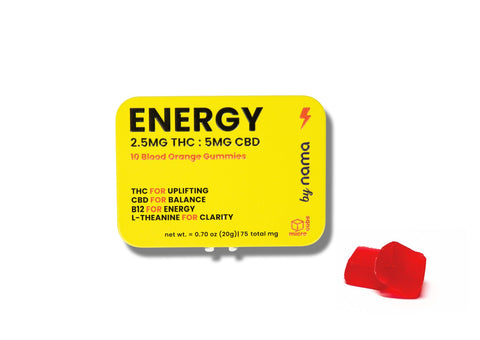
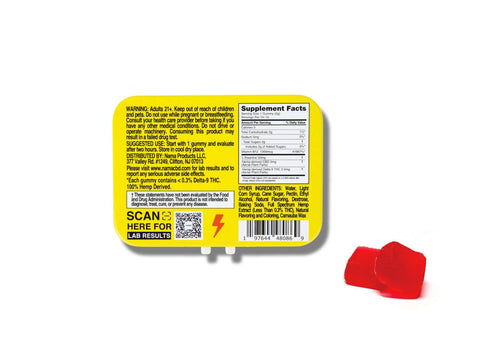
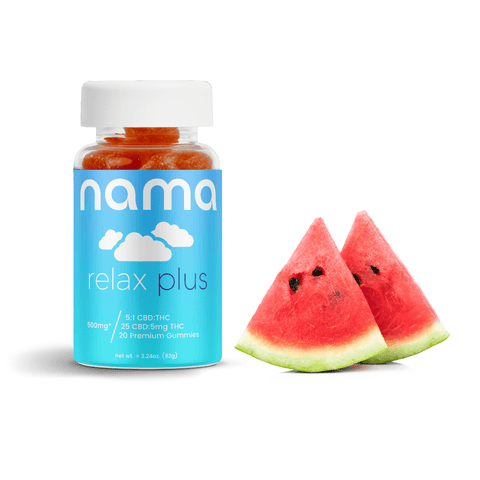


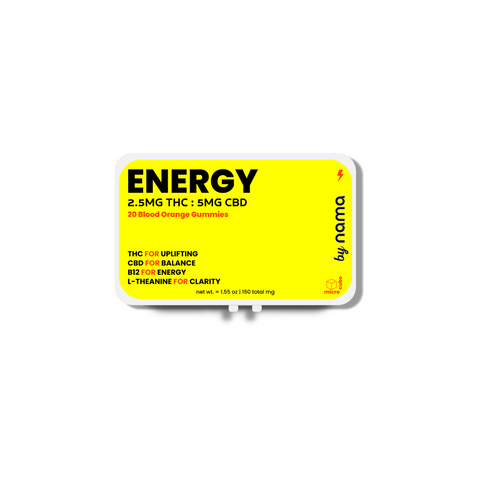

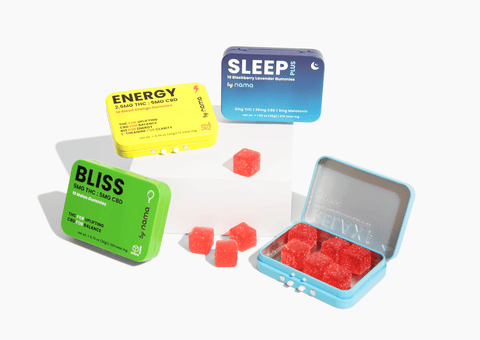
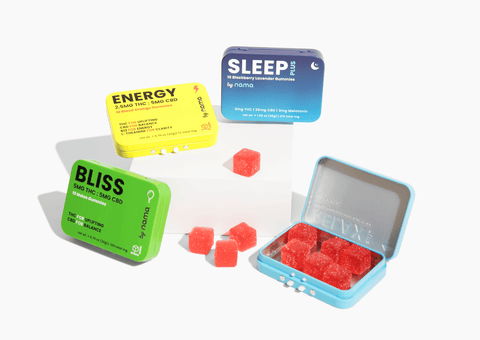
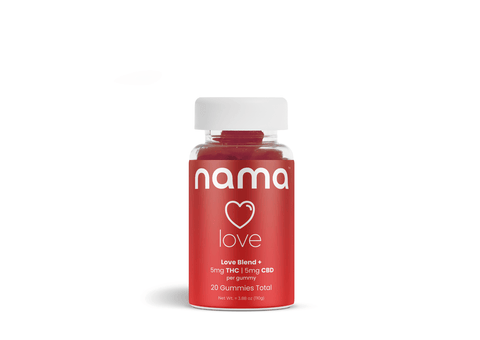




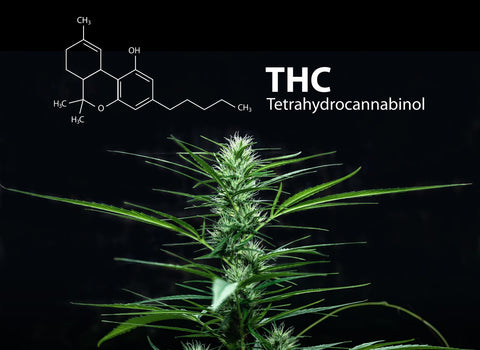

Comments (0)
There are no comments for this article. Be the first one to leave a message!